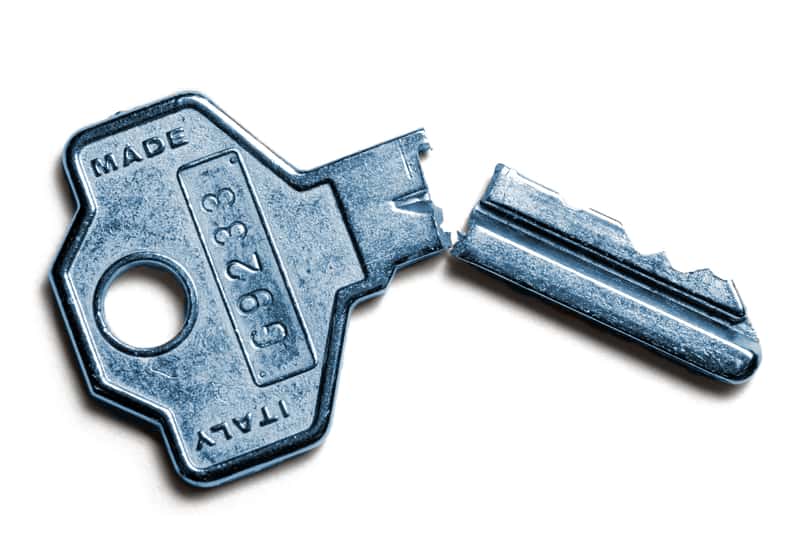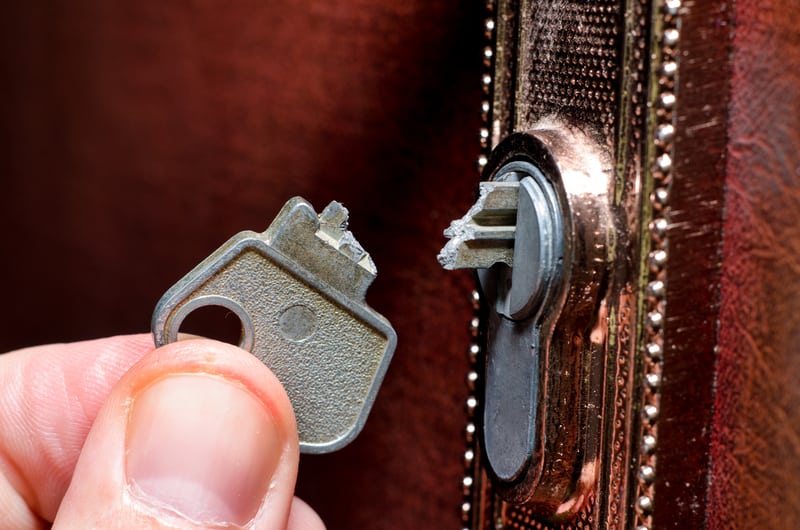“This post contains affiliate links, and I will be compensated if you make a purchase after clicking on my links.”
I am sure everyone had this experience: A hard to open lock wears out your key until it breaks, or sitting on your keys breaks the key. While a replacement key is sometimes available, especially for these old garage door keys or other ancient lock openers, the second key probably got lost over the years. However, since we have our welding equipment waiting for the next task, here is how I would fix my broken keys.
Generally, when the key broke at the shaft and has excess material next to the keyway left, the key can be fixed with TIG welding or brazing/soldering. Keys are manufactured from brass or brass alloy, which includes nickel. By using low heat input and a heat, sink brass can be joined and burn through prevented.
As this is the short answer, I like to lay out a couple of caveats in this article. In the end, you should decide which process to choose for the repair or why it might make sense to look into alternatives before getting frustrated.
Note that I wrote a full article on brass welding here. Check it out for further information about welding this challenging element.
When is a Key Beyond Repair?

Before we are getting set up, we need to be realistic about the chances of repairing the key. If the key broke very close or even along the keyway, chances of creating a functional repaired key are slim. Issues are that the surface thickness increased, the shaft gets distorted by the heat, or the key’s teeth get obstructed.
In these cases, save yourself the hassle and find a replacement key, ask a key maker to work with what you got to manufacture a carbon copy, or drill out the lock to start with a fresh set of keys.
How I to Repair a Key
To cover a range of possibilities and tools on how to fix your key with a focus on welding, I will explain a brass weld with TIG and soldering. Also for the interested some alternative solutions.
Weld a Key with TIG
For TIG welding a brass or brass-alloy key, I recommend clamping the key on a metal block to prevent overheating the material. Regarding the tungsten electrode size, a common 1/16″ electrode should work. Remember to sharpen the tip properly. If you like to get a refresher on sharpening, I wrote an article about that here.
For the filler material, I would select silicon bronze. Other copper-based filler materials should also work. Also, make sure not only the filler rod but also the key is thoroughly cleaned with acetone.
Pre- and post-flow would be >2 seconds for me. Adjusting up if I got too much oxidation. On the weld settings: Since brass alloys often have zinc included, melting the base material does create smoke and porosities in the weld. Therefore the welding strategy is not to meld up the base material but only the filler rod. So if you see bubbles in your weld puddle, reduce the amps.
Start settings are DC and 80-100 Amps. This will allow you to weld at a high travel speed and reduce the melt-up in the base material. This will also reduce the zinc fumes released. Continuously dip the filler material into the arc focus point or lay down the filler material over the gap between the two key pieces and melt up the filler. The second version is a bit easier to do; it will result in inferior results, though.
Important note: Welding brass releases zinc fumes. Zinc fumes are quite toxic and can cause the so-called welder’s sickness. Make sure you have either proper extraction or good ventilation when welding.
Join a Key by Soldering
As most keys break in a stress fracture due to mechanical forces, the filler material for soldering should have decent strength. Therefore my choice would be silver solder. I wrote a comprehensive article about the strength here.
Silver solder has a lower melting point than brass and might get a couple more uses out of the key, as it is one of the strongest solder materials. However, even if applied correctly, it will only be a temporary fix and not a permanent solution.
Alternatives Repairs
TIG and soldering are by no means the only ways on how to repair a key. However, I found them the most workable solutions with commonly available tools and a decent chance of success.
For those of you who have ample funds, great access to all kinds of tooling, or really need to fix that key at all costs; I will mention some processes to look into:
- Laser Welding: If you are one of the few fortunate to have access to either a hand laser, dentist laser station, or a full-blown laser robot, laser welding gives you the greatest chances of success for your key repair. The low and precise heat input will allow for a great joint and a long-lasting repair. Keep in mind to use a fiber laser due to reflection issues with brass.
- MIG Welding: Quite tricky if you ask me. I see issues with visibility on the small workpiece, weld time (= heat input), and precisely navigating the (very thin) wire along the joint. However, I am not saying it is impossible without a robot arm and some high-end welder; this is more of an honorable mention.
- Gluing: Surprisingly, gluing can be as strong as welding if applied correctly. The broken surfaces on both ends need to be ground flat. Additionally, the surface quality needs to be spotless, without any grease or residues, and smooth enough to see your own reflection. Requires excellent prep work.
- Locksmith: None of the mentioned solutions will be as good as a new key. Either break the lock or let it be open and get a new key. Welding or gluing will only give you a short-term fix due to the change in metallurgy and the high torsion force on the repaired joint. Just thought I mention it.
Important to note: Before you start using your repaired key again, grease your lock. Firstly because it extends the life of your repair and secondly, because the torsion forces from a stuck lock might be the reason why your key broke in the first place.
I hope this info helps in getting the job done and back into your garage or shed. If you want to learn more about brass welding in general, I also have dedicated articles on welding for MIG, TIG, and soldering brass.





1 thought on “Can you weld a key? Three ways to fix a broken key”